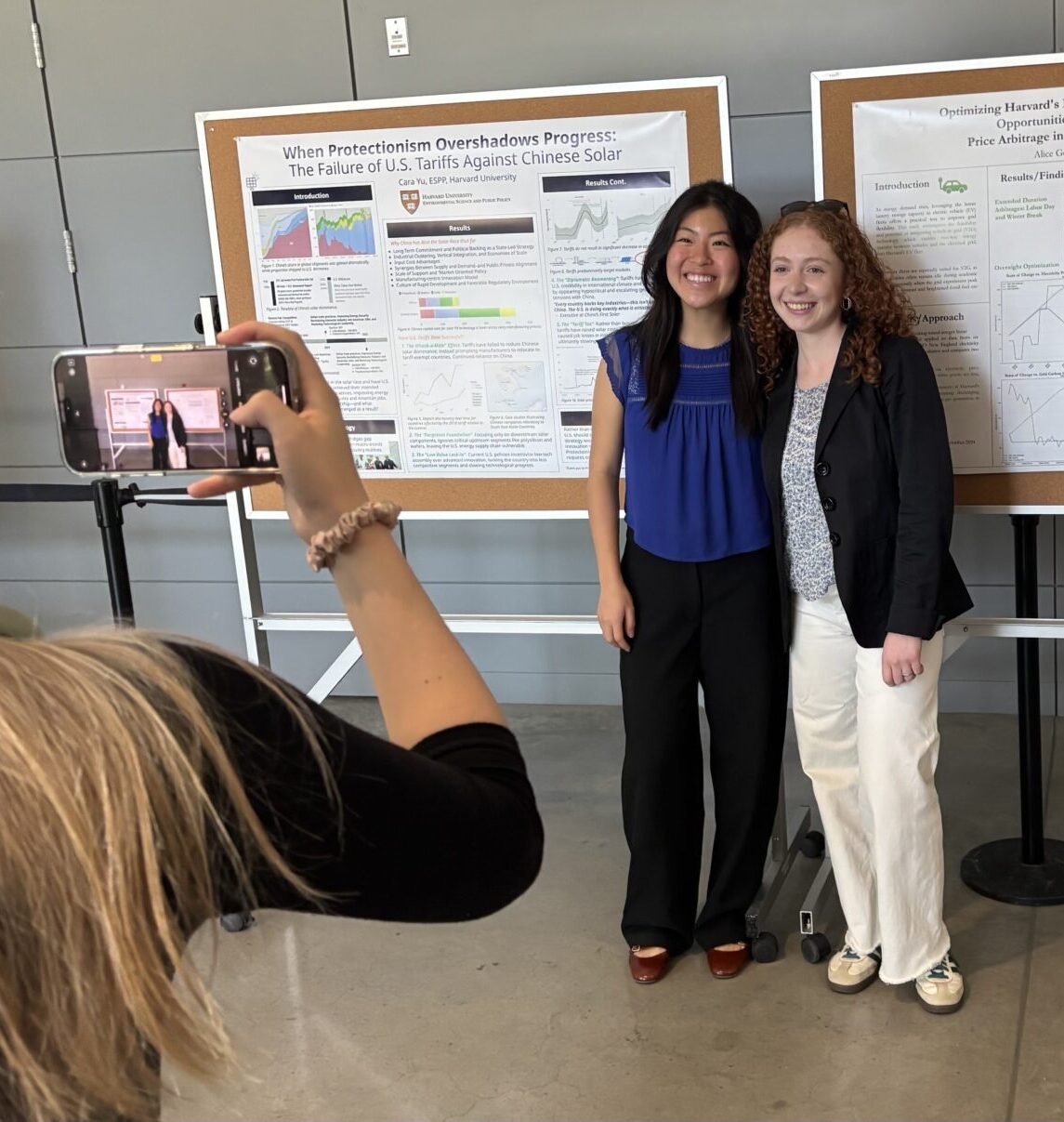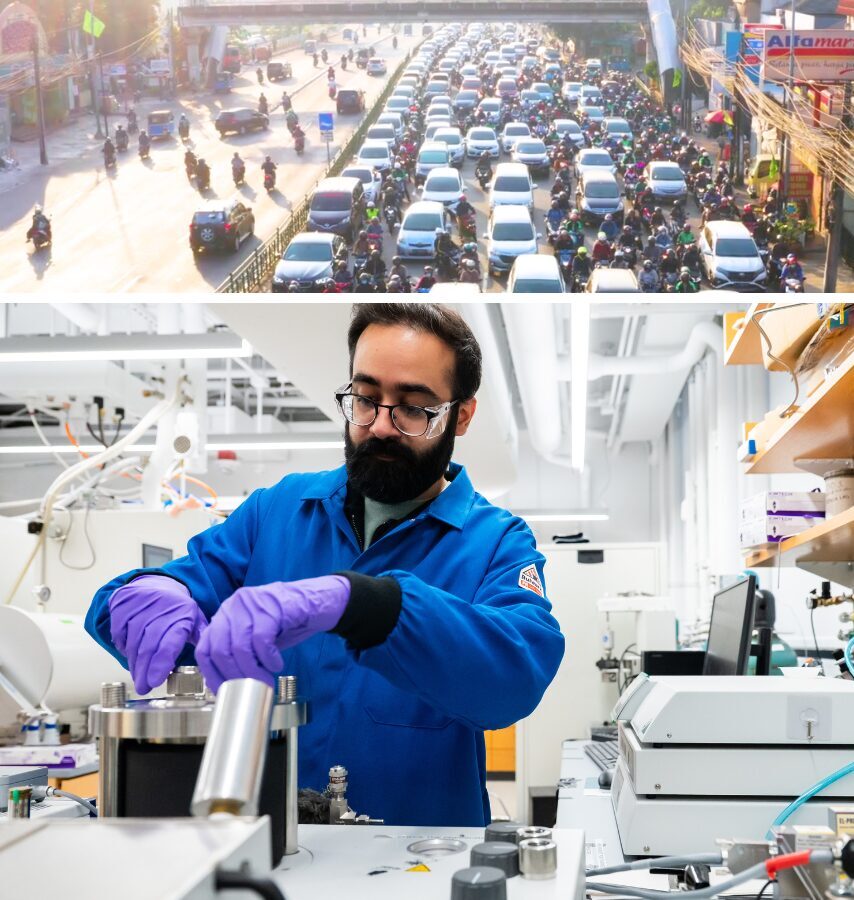Wings and Wavelengths
Professor Naomi Pierce has created a new device that allows her team to complete multi-spectral scans and identify unique nanostructures on butterfly wings. Her research team will use this knowledge to inform bio-inspired design of materials with functions including enhanced thermoregulation, IR radiative cooling, and UV resistance.
Author: Anika Richter
To some, rainbows and butterflies are mere symbols of bliss. In the words of Maroon 5, “it’s not always rainbows and butterflies, it’s compromise that moves us along.” But to Professor Naomi Pierce, rainbows and butterflies might just help us create a climate-resilient future.
Pierce and her team of researchers in the Department of Organismic and Evolutionary Biology have been studying the nanostructures of Lepidoptera—or butterflies and moths as most of us know them—to discover what innovative bio-inspired designs and technology could emerge from nature. In 2021, Pierce was awarded funding through the Climate Change Solutions Fund to further develop this research, and what has come of it is nothing short of incredible.

Pierce is studying “radiative cooling,” the phenomenon by which Lepidoptera reflect light to cool themselves. Understanding how this happens may hold important clues for adapting to higher temperatures. She calls the project, “Wings and Wavelengths,” a more sophisticated nomenclature than my reductive, “rainbows and butterflies.” Afterall, the light wavelengths reflected by these wing nanostructures extends beyond the human spectrum of visible light.
“The general concept of radiative cooling is really important to me…it sounds like a single, one-off thing, but to appreciate how profound the cooling is took me a while to take it on,” said Pierce.
Pierce’s lab created a new device that uses a camera and LED lights that emit various wavelengths of light. The researchers use it to measure the reflection of these wavelengths of light, including ultraviolet, fluorescent, visible light, and near infrared light.

To study these reflective traits of the insects, Pierce is examining the scales on butterfly wings. The term, Lepidoptera, even means “scaly wings.” The wings are incredibly delicate with important pheromone patches that must be kept cool. Without specialized wing scales, the near infrared light would get trapped in the wing nanostructures and fry the butterfly. Pierce discovered that the wings of the butterflies she had been studying were reflecting almost all the near infrared that hit them, leading her to dig deeper into the nanostructures of these wing scales to determine how and why this happens, and what we can learn from Lepidoptera wings.
Using these nanostructures that her lab has been studying, Pierce’s collaborator, Nanfang Yu of Columbia University worked with polymer physicist Jyotirmoy Mandal to create a paint with similar structures and bubbles found in the butterfly wing scales. According to Pierce, when this paint is applied to building surfaces in hot climates, it could bring down air conditioning costs by about one-third. Pierce listed other exciting applications of this nanostructure research, including the use of bio-inspired fabric fibers to create clothing with radiative cooling properties.
Pierce’s method of quickly scanning trays of Lepidoptera allows her team to study the entire phylogeny of these insects, making it possible to sample many species of these butterflies and moths to understand their wing structure, and determine which wings best reflect various wavelengths of light. The scans then associate the various wing scale structures with their reflective properties, which allows the researchers to trace specific nanostructures to certain reflective properties. Pierce plans to use artificial intelligence to look at images of Lepidoptera and identify other species that may have wing nanostructures of interest.

Pierce has already observed that some butterfly wings reflect more UV rays but still absorb visible light, while others reflect both UV and near infrared light equally. These findings are significant because they could inform human applications, such as developing more effective sunscreens that better protect from UV rays.
Pierce says that this research has benefited from interdisciplinary and cross-school collaboration and credits the Salata Institute for supporting such work. “I’ve really enjoyed talking to the people in the Aizenberg Lab and the Design School people…that is a very nice feature of this institute,” she said. The collaboration grew out of the process of developing a proposal for the Salata Institute’s Climate Research Clusters Program, which incentivized the cross-school research that is desperately needed for finding climate solutions.
This collaborative approach has thus allowed Pierce and her team to approach her Lepidoptera research through a new lens—one that is being used to explore characteristics of butterflies that could lead to new bio-inspired technology and design, including new paints and textiles.
Butterfly wings and their multispectral rainbow reflectivity may be a part of how we adapt to a changing climate, which would make Pierce’s contribution to climate resilience more than just rainbows and butterflies.
Anika Murasaki Richter is a Master in Urban Planning candidate at Harvard University’s Graduate School of Design and an intern with the Salata Institute.







